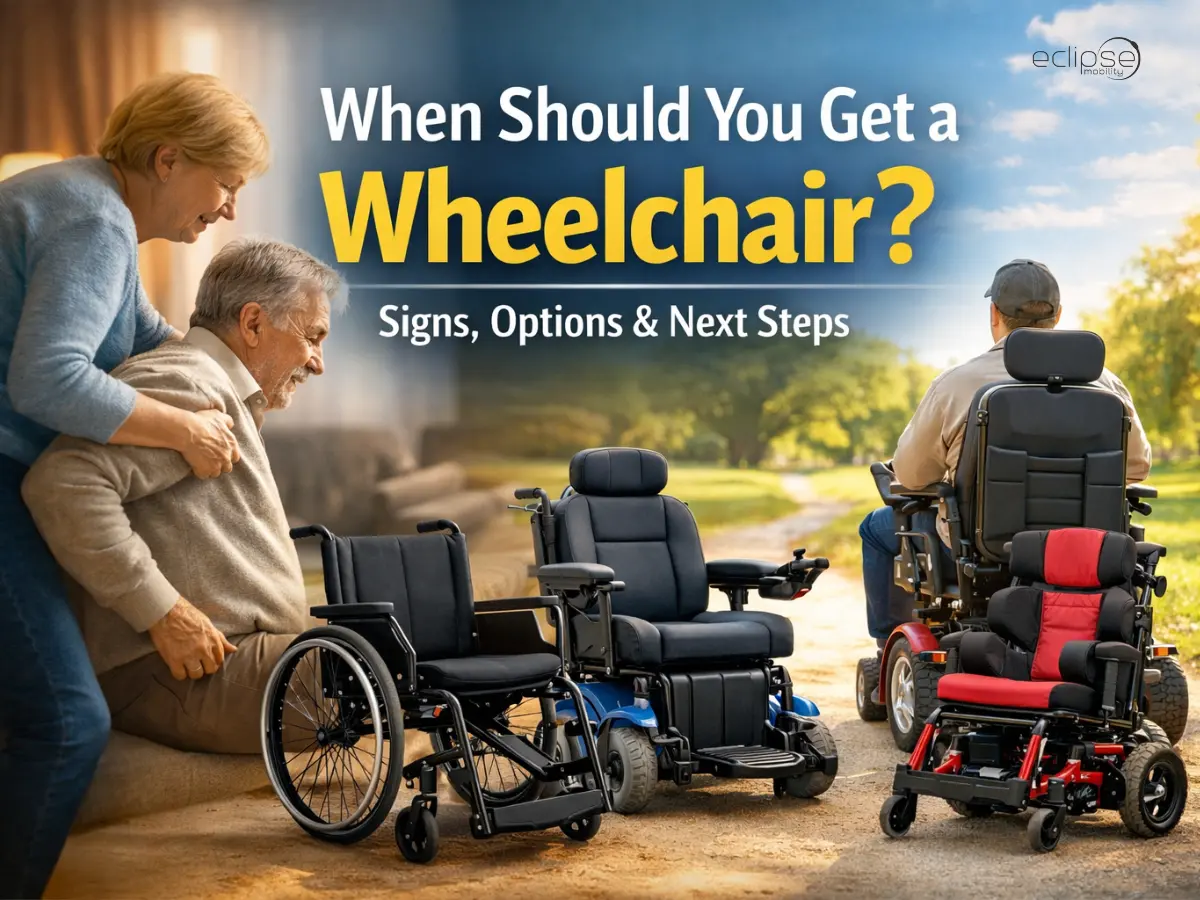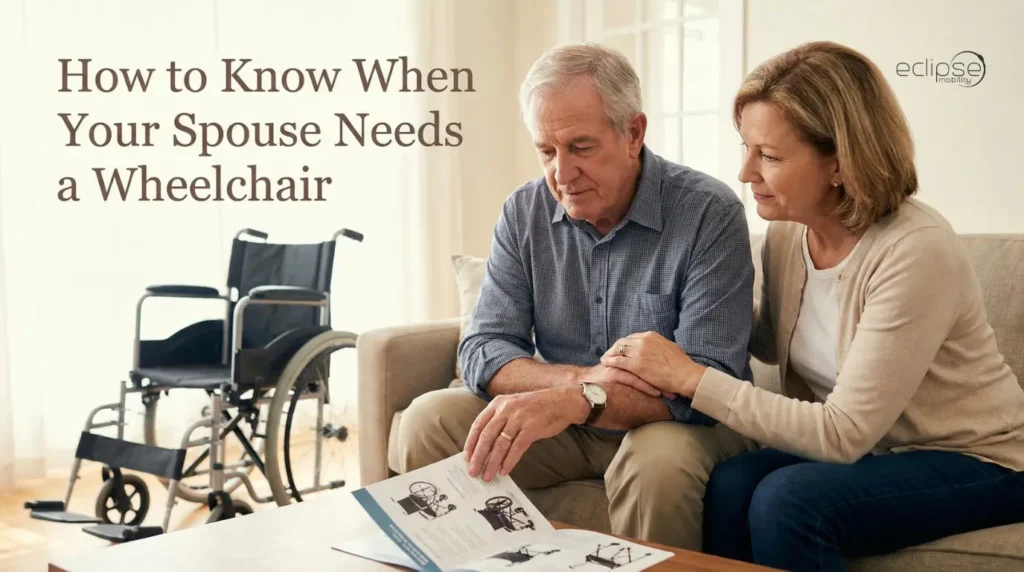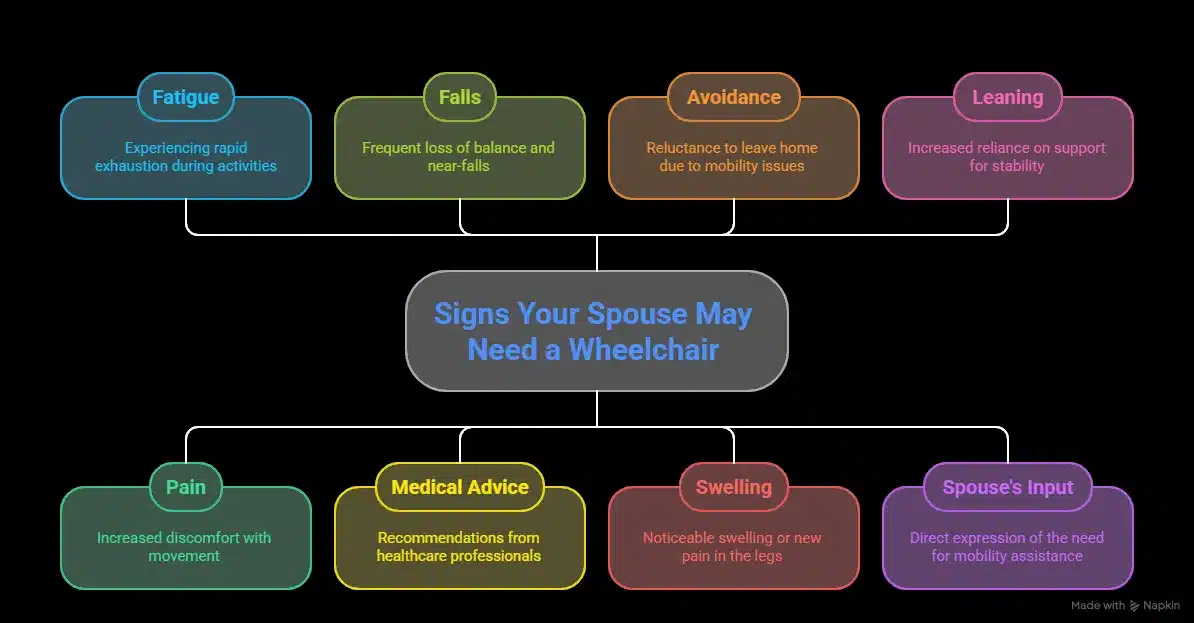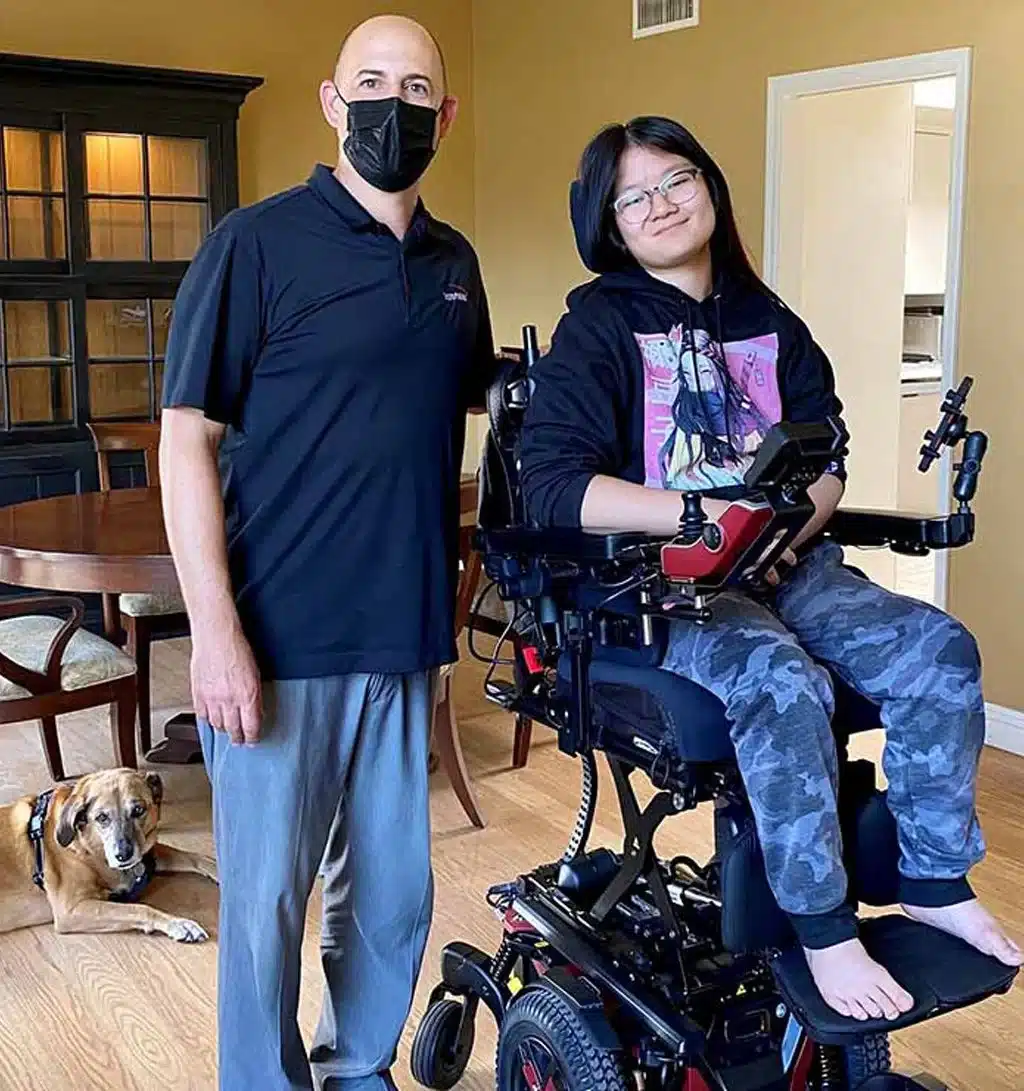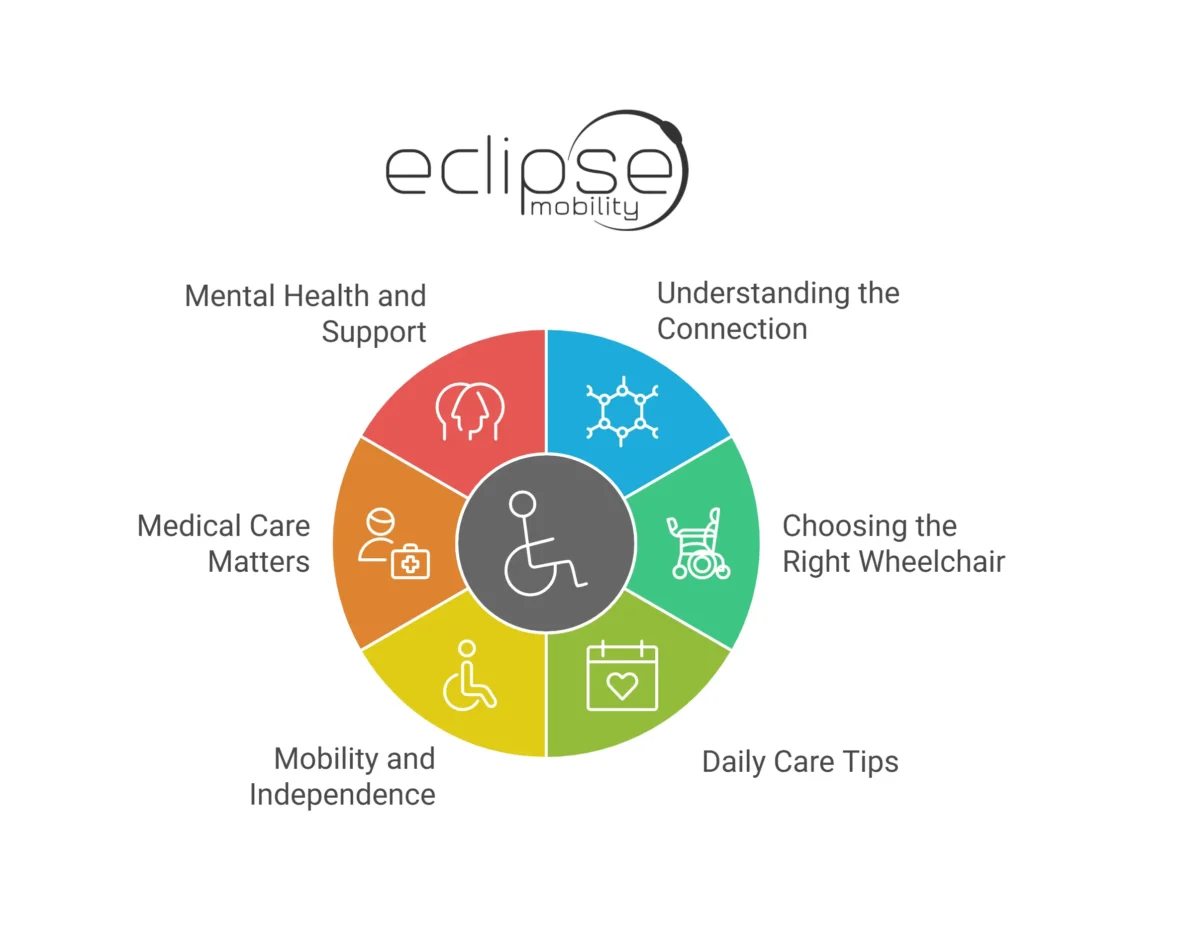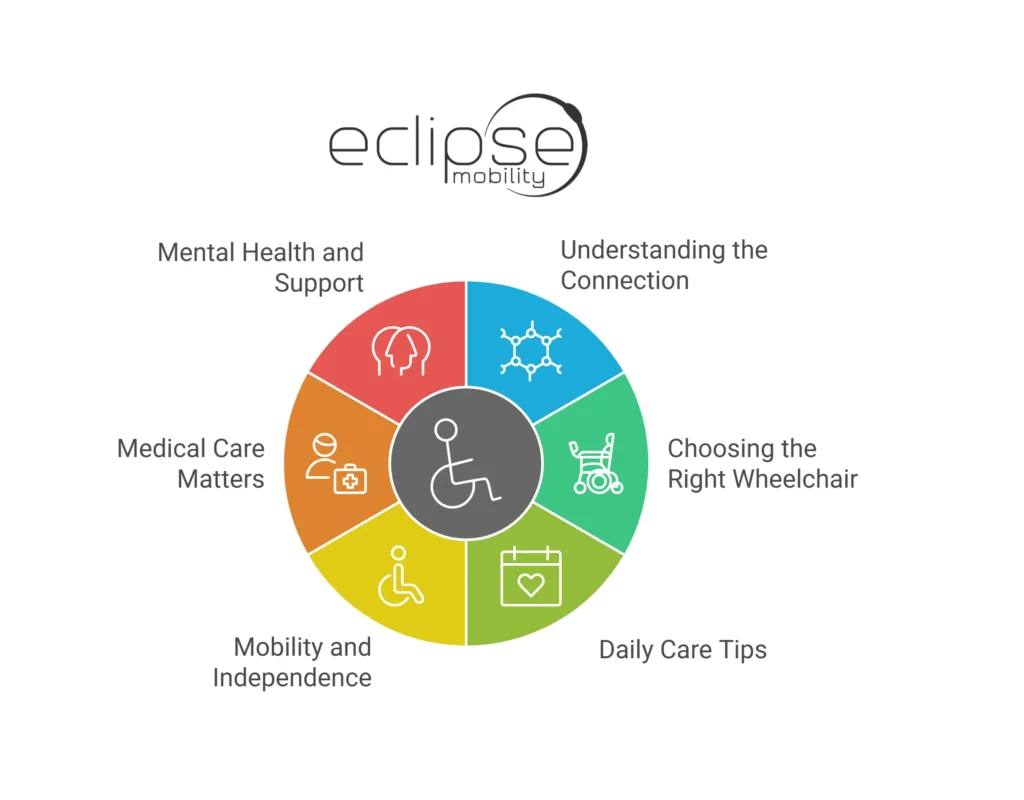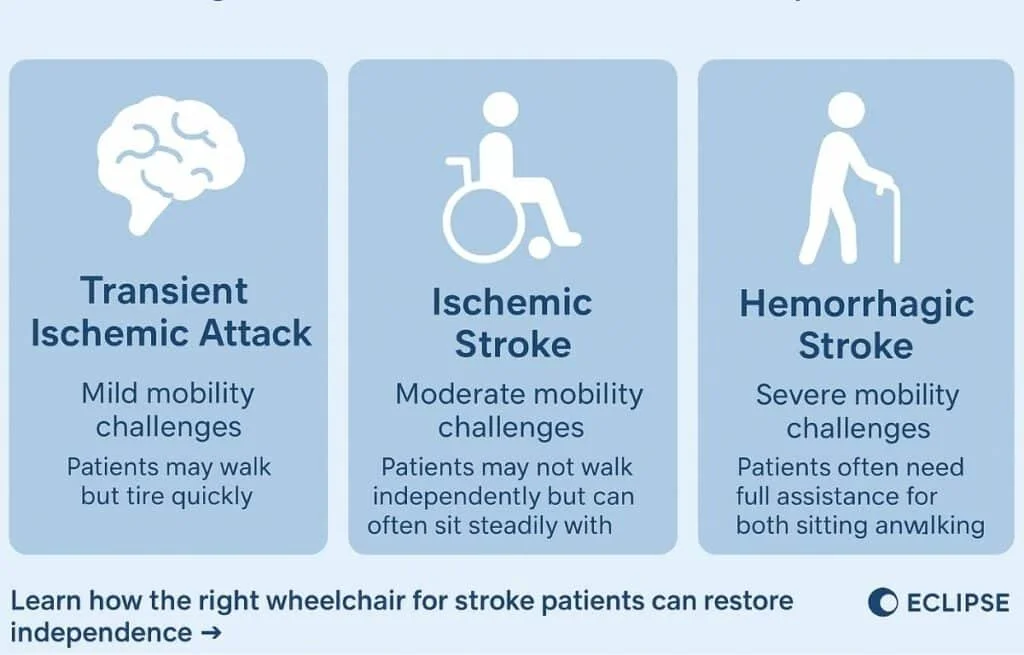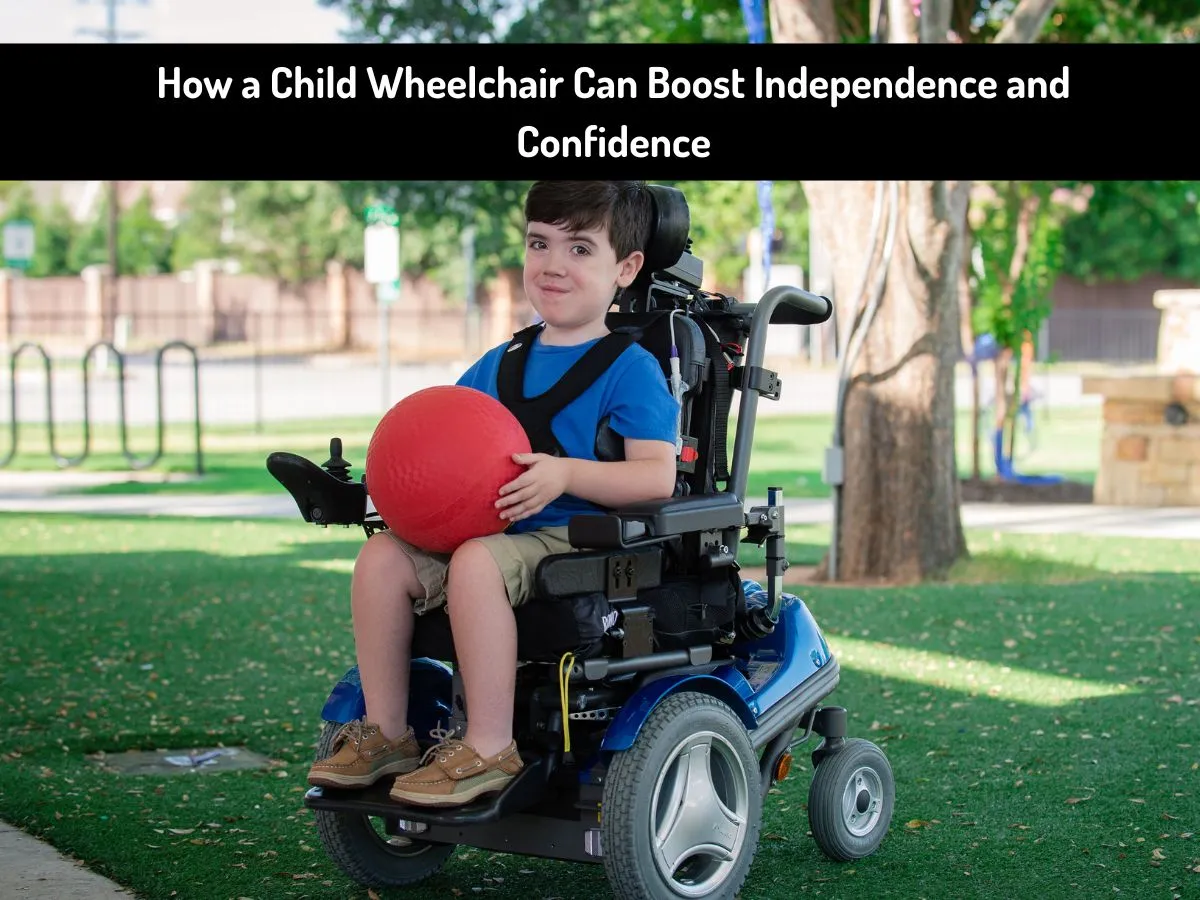Getting a wheelchair is not an easy decision. Many people wait longer than they should. Not because they don’t need help, but because they are afraid of what it means. A wheelchair can feel like giving something up. In reality, it often gives life back.
If you or someone you care for is struggling with mobility, this guide will help you understand when it may be time, what options exist, and what to do next.
Let’s talk about it in a real and honest way.
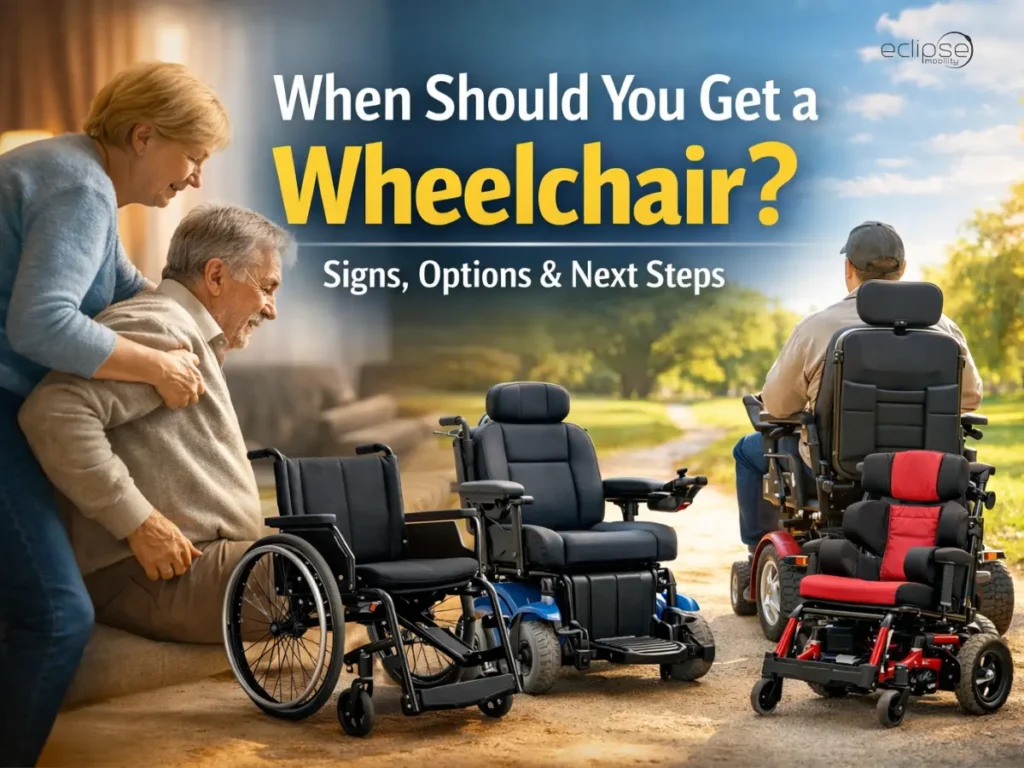
Common Signs It May Be Time for a Wheelchair
Mobility changes usually happen slowly. One day feels fine. Then walking feels harder. Then normal tasks start to feel exhausting.
Here are some signs that are worth paying attention to.
Walking causes pain or fatigue
If walking even short distances leads to pain, weakness, or heavy fatigue, your body may be asking for support. A mobility wheelchair can reduce strain and help conserve energy.
Fear of falling
Falls are one of the biggest reasons people lose confidence. If balance feels shaky or falls have already happened, safety becomes the top priority.
Daily activities feel limited
If grocery shopping, family outings, or even moving around the house feels stressful, mobility is affecting quality of life.
You avoid going out
Many people stop socializing because moving around feels like too much work. This can lead to isolation and frustration.
You rely on others more than you want to
Needing constant help can feel discouraging. A wheelchair can actually restore independence instead of taking it away.
What a Wheelchair Really Does
A wheelchair is not a failure. It is a tool. Just like glasses help you see, a wheelchair helps you move.
The right wheelchair can:
- Reduce pain
- Increase safety
- Improve confidence
- Make daily life easier
- Help you stay active and social
People often say they wish they had made the decision sooner.
Understanding Your Wheelchair Options
Not all wheelchairs are the same. Choosing the right one matters.
Mobility wheelchair
This is a general term used for wheelchairs that support movement and independence. It can include manual or powered options depending on need.
Power wheelchairs
These are best for people who have limited strength, endurance, or control in their arms. Power wheelchairs allow longer movement without physical effort and offer advanced positioning options.
Custom wheelchair
A custom wheelchair is designed specifically for the user’s body and condition. It focuses on comfort, posture, and long-term health. This option is often recommended when pain, posture, or support needs are complex.
Special needs wheelchair
This type is designed for individuals who require additional support, positioning, or safety features. A special needs wheelchair can make daily life safer and more comfortable.
Each option serves a different purpose. The best choice depends on strength, medical needs, lifestyle, and goals.
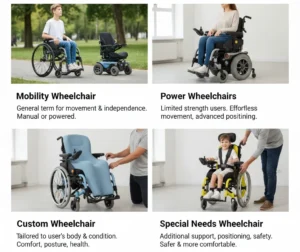
How to Know Which Wheelchair Is Right
This is where professional guidance matters.
A seating and mobility specialist can evaluate posture, strength, balance, and daily needs. They don’t just sell equipment. They help find the best solution for real life.
The goal is not just movement.
The goal is comfort, safety, and independence.
What to Expect Emotionally
It’s normal to feel unsure. Many people worry about how others will see them. Others fear losing independence.
But here’s what often happens instead.
People feel relief.
They move more freely.
They participate in life again.
A wheelchair does not change who you are. It supports who you already are.
Ready to Explore the Right Wheelchair Option?
Next Steps to Take
If you think it may be time, here’s what you can do next.
Start the conversation
Talk openly with your doctor or care provider. Be honest about pain, fear of falling, and fatigue.
Schedule an evaluation
A professional assessment helps determine if a mobility wheelchair, custom wheelchair, or power wheelchair is the right fit.
Think about your daily life
Where do you go? What do you enjoy? Your wheelchair should support your lifestyle, not limit it.
Take it slow
Some people start by using a wheelchair only outside the home. Others use it part-time. There is no right or wrong way.
Next Steps to Take
If you think it may be time, here’s what you can do next.
Start the conversation
Talk openly with your doctor or care provider. Be honest about pain, fear of falling, and fatigue.
Schedule an evaluation
A professional assessment helps determine if a mobility wheelchair, custom wheelchair, or power wheelchair is the right fit.
Think about your daily life
Where do you go? What do you enjoy? Your wheelchair should support your lifestyle, not limit it.
Take it slow
Some people start by using a wheelchair only outside the home. Others use it part-time. There is no right or wrong way.
Final Thoughts
Choosing a wheelchair is not about giving up. It’s about moving forward in a safer and healthier way.
If walking feels painful, exhausting, or unsafe, a wheelchair may be the support that allows you to live fully again. Whether it’s a mobility wheelchair, a custom wheelchair, or one of many power wheelchairs available today, the right option can change daily life for the better.
Listen to your body.
Ask for help when you need it.
And remember, mobility is about freedom – not limitation.
FAQs
- When should someone consider getting a wheelchair?
Use a chair with wheels if it hurts to walk. Use one if you get tired when you walk. Use one if you are not safe when you walk. If you could fall, you need help. If it is hard to do things each day, get a wheelchair. With it, you can do more. With it, you can feel good. With it, you can be safe. It helps improve independence and comfort. - Does using a wheelchair mean losing independence?
No. In most cases, it does the opposite. A wheelchair allows people to move safely, stay social, and reduce reliance on others. Many people feel more independent after using one. - What’s the difference between a custom wheelchair and a standard one?
A standard wheelchair is made to fit most people. A custom wheelchair is made to fit one person. It’s adjusted for body shape, posture, and daily needs. This usually means better comfort, less pressure, and easier use over time. - Who benefits most from power wheelchairs?
Power wheelchairs are ideal for people with limited strength, endurance, or upper-body mobility. They allow longer travel distances with less effort and provide better control and positioning. - What is a special needs wheelchair used for?
A special needs wheelchair is built for people who need extra support to sit safely and comfortably. This can include added positioning, stability, or safety features. The goal is to make everyday movement easier and more secure.

